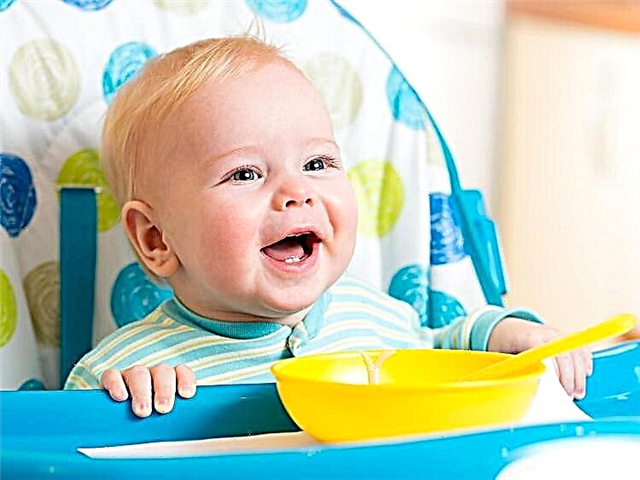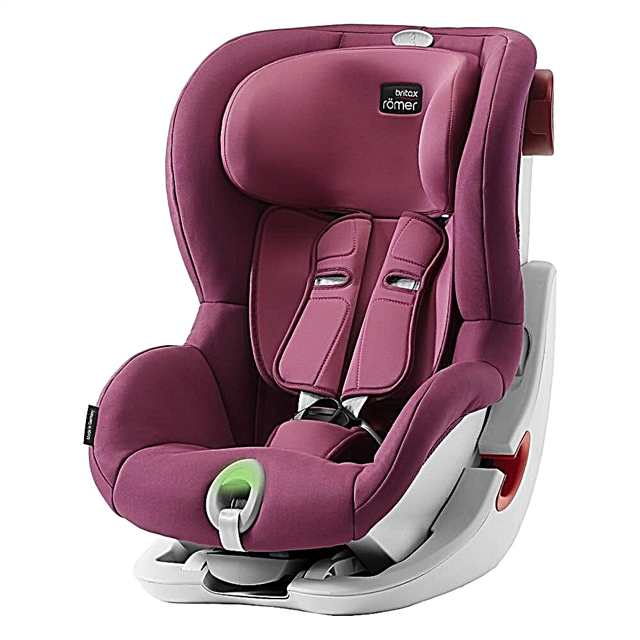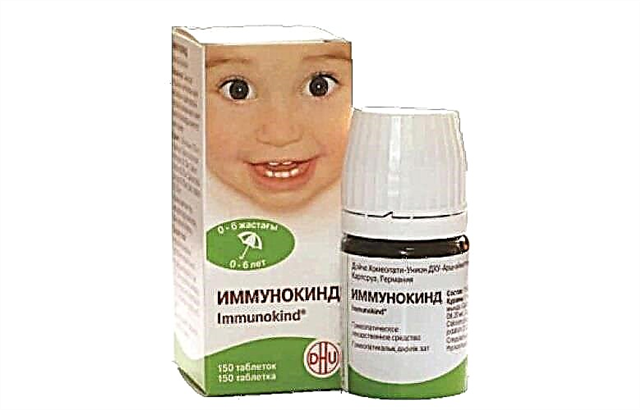Modern moms use many useful gadgets to make it easier to care for their babies. Among them there is an object whose age is counted in centuries. We are talking about a pacifier, the purpose of which was known in ancient times and was successfully used as a substitute for the mother's breast.

The pacifier helps mom in caring for the baby
Why does a baby need a dummy
Disputes about the need for a dummy are constantly being conducted both among young mothers and among specialists. Pediatricians say that sucking the mother's breast is not only feeding the baby, but also satisfying his need for mother's love. From this position, the dummy has nothing to do with feeding, but it can temporarily replace the mother's breast. For example, Dr. Komarovsky believes that while the baby is busy with the pacifier, the mother has additional time and opportunity for other things. Therefore, a dummy is considered the key to the peace of both.
Do I need to teach: "for" and "against"
When the question arises in what month of life to accustom a child to a dummy, and whether it should be done at all, it is worth listening to the opinion of experts. For example, pediatricians argue that a pacifier should be given, since the sucking reflex in a baby develops long before his birth, and it supports him. Gradually, the need for a nipple will disappear, so there is no cause for concern.
Psychologists have a different opinion, believing that no dummy can satisfy the baby's need for physical contact with the mother. The best way to communicate with a baby is to offer him breasts, not an artificial substitute. The more contact between mother and child, the better the child's psyche is formed.
Breastfeeding experts say that the pacifier interferes with a nursing mother, as the baby's habituation to it can affect his unwillingness to suckle. As a result, the mother's milk supply may decrease.
Important! Despite all the pros and cons, many experts agree that a dummy is contraindicated for a newborn in the first weeks of life, since at this time he should receive only the mother's breast. Komarovsky warns that until the guards are established, nothing is worth giving.

Mother's breast in the first weeks of a baby's life should not be replaced with a pacifier
Impact on speech development
In addition to the fact that the nipple should not replace completely breastfeeding, its effect on the overall development of the baby is noted. For example, there is a widespread belief that a dummy inhibits speech activity. Because of this, mental development is slower, as a result, the child begins to speak later. However, experts believe that this is largely due to speech therapy problems arising from an incorrect bite. Children with this defect may have difficulty in stating hissing and sibilant consonants.
Note. In psychology, it is believed that in infancy, the main action is emotional communication with the mother. If the mother prefers to give the baby a pacifier instead of picking him up, playing, "babbling" with him, undoubtedly, his speech development will slow down. A child left alone with a dummy will not receive the amount of knowledge that is necessary at this age.
Effects on breastfeeding
Meanwhile, many parents do not consider the pacifier to be evil for breastfeeding. This opinion is erroneous, pediatricians warn young mothers that the majority of breastfeeding women in the first weeks milk is not constantly released, but in hot flashes. Therefore, the baby has to suckle with effort for some time in order to achieve the flow of milk. Then the inflow stops and the baby must continue to work for the next milk flow.
Important! The realization that the breast must be sucked with effort, and the nipple is easy and simple, can lead to the baby's refusal from guards.
An inexperienced mother worries that there is not enough milk and gives the baby a bottle of milk for supplementary feeding. There is an addiction to the nipple, with it the baby falls asleep easier, sleeps better, as he receives milk without effort. Although breastfeeding should be the infant's main source of nutrition.
When is it better to offer a baby a dummy
Each mother should decide the question of whether a dummy is needed and when to offer it to a child individually, asking for advice from a pediatrician. The specialist will explain what the positive and negative sides of the dummy have. For example, it is irreplaceable during a walk, it helps to calm the baby.

A pacifier will help a mother calm her baby and eliminate negative habits
Pediatricians sometimes advise with its help to regulate the intestines and gas production in the child. At night, when the baby is awake, the dummy will help him fall asleep.
After a year, children are advised to give a pacifier while playing outside, so that they do not take contaminated toys into their mouths, do not suck their fingers, since the sucking reflex has not yet died out. It can be much more difficult to wean a baby off thumb sucking than a pacifier, so it is useful in this situation.
On the other hand, prolonged use of a pacifier can cause crooked teeth and affect speech development. Therefore, despite the difference of opinion, whether a baby needs a nipple, it should definitely not be abused.
What is the difference between pacifiers
When asked which pacifier to choose for a child, experts advise mothers to pay attention to the shape of the breast nipple, which acquires a certain shape. This will tell you what shape the dummy is best for your baby.
By the shape of the sucking part
- The shape of the classic, that is, round, nipple repeats the nipple of the breast. This brings the process as close as possible to natural feeding.
- The orthodontic pacifier has a beveled and flattened shape. This reinforces the correct position of the tongue in the mouth. There are various types on sale: "Cherry" - for newborns with a large palate; "Butterfly" - for sucking while lying on the tummy; "Heart" - for good development of the dentition.
- The anatomical pacifier is similar to a flattened oval, evenly distributes pressure to the palate.
- New generations of nipples with an anti-vacuum system have appeared on the market, that is, with a valve that helps to reduce the volume of air swallowed, which reduces the frequency of regurgitation. Plus - it prevents sticking, which makes it possible not to come off the bottle during feeding.
Important! The nipple should change with the development of the child and take into account his individual characteristics, the recommendations of the pediatrician will help you choose the right size and material.

When purchasing a pacifier, you should pay attention to its material and size
How to teach a child to dummy
Young mothers often ask the question of how to properly teach how to suck a pacifier. Pediatricians advise to teach the baby during the waking period, when he is calm and in a good mood. It is enough to put a nipple in his mouth, and the sucking reflex will make itself felt.
According to Dr. Komarovsky, the nipple is needed to solve parental problems, for example, to keep the baby busy, but the nipple should not turn into a problem itself. Therefore, each child himself will tell his mother whether he needs her.
Preparing the baby
Sometimes parents, realizing the benefits of a dummy, do not know how to accustom a child to it. Pediatricians reassure them that they should not think that this is a mandatory attribute of childhood. If the child does not take the pacifier, there is no need to forcefully teach him. It is better to use special techniques so that the baby himself loves the pacifier.
Council. If the newborn does not take a pacifier, this is not a big deal, some children do just fine without it.
Sweet bait
Often mothers on children's forums share their experience of how to teach a child to nipple.
Important! Pediatricians warn about using the grandmother's method, when a child is attracted with a dummy smeared with jam or honey. This method, despite its effectiveness, can be harmful, especially for a baby with allergic reactions.
The safest and most effective way, if the baby does not take the pacifier, is to lubricate it with mother's milk. Its taste is familiar to the baby, and training will be easier.
Correct grip
From the position of correct grip, the best is an orthodontic pacifier with a sloping nipple, flattened on one side and convex on the other. Thanks to its teardrop shape, it provides a proper grip and fits comfortably in the mouth, simulating the grip of the mother's breast.
Sucking lying
Often mothers ask in what position it is desirable to offer a dummy to a child? Experts say that training is best done while lying down: the mother picks up the baby in her arms, as with normal breastfeeding, and offers a pacifier. This is the usual position of the child. For sucking while lying down, use special pacifiers, for example, an orthodontic butterfly designed for the prone position.

Pacifiers should be used in dosage to avoid habituation
How to avoid addiction
Teaching a baby to a nipple and weaning from it are the problems of an adult, they need to be approached responsibly. It is more useful to worry not about why the baby is not sucking on the pacifier, but about getting used to it.
Prolonged use of a pacifier leads to the habit of taking surrounding objects into the mouth: the edges of clothing, a blanket, fingers, toys. To avoid addiction, to the point that the child feels helpless without it, pediatricians suggest using the following rules:
- To offer the item is dosed, only if the baby is very anxious. Taking the time to give a pacifier as soon as he cries, there are many other ways to calm him down.
- Avoid prolonged sleep of the baby with the pacifier in the mouth. As soon as the baby has fallen asleep, you need to carefully remove the pacifier from the mouth.
When accustoming to a dummy, you need to remember about its safety and the rules for its use. Despite the obvious convenience, pediatricians recommend not to delay its use and try to wean the baby to a maximum of one and a half years.



